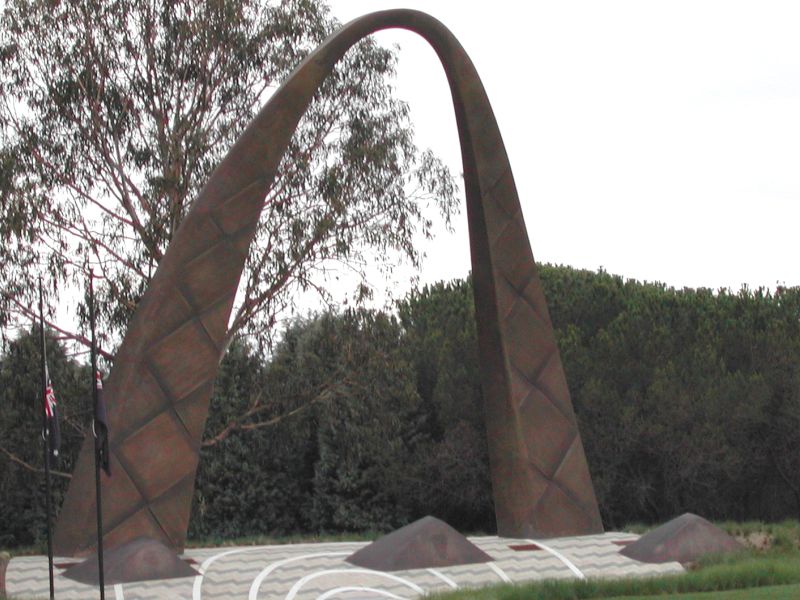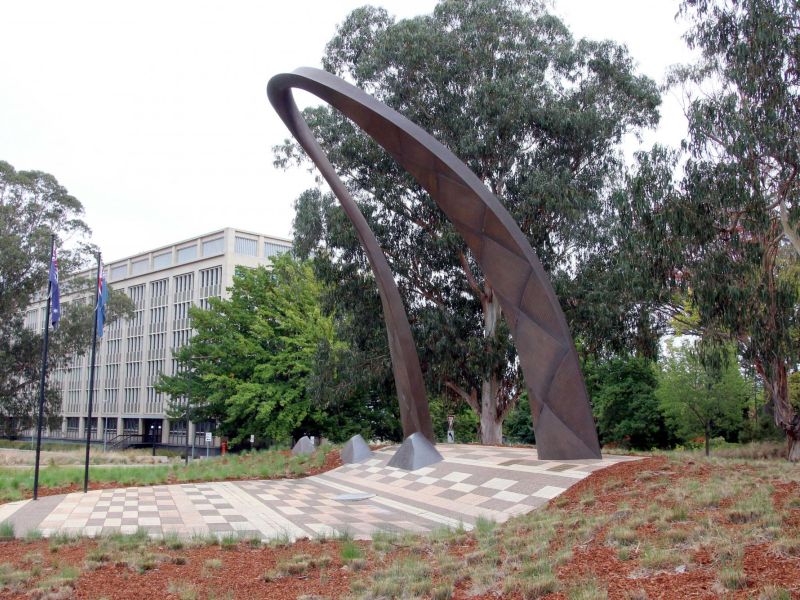The Memorial to Shared Experience
The New Zealand Memorial in Canberra was officially dedicated by the Prime Ministers of both Australia and New Zealand in a moving ceremony on the 24th of April 2001, the eve of Anzac Day.
Standing 11 metres high, the two-part memorial that flanks both sides of Anzac Parade was a gift from the New Zealand Government to the people of Australia. It symbolises the Anzac experience and is a reminder of the long history of cooperation between the two nations, an experience that remains one of the most evocative links between Australia and New Zealand.
The design consists of a bronze representation of the handles of a flax basket (kete harakeke). Based on the proverb 'Mau tena kiwai o te kete, maku tenei' or 'Each of us at a handle of the basket', the kete symbolises the shared 'load' and experience of Australians and New Zealanders, especially in wartime, with the dynamic form of the handles emphasising the ongoing evolution of that relationship.
Each handle is distinct, with one representing Australia, and the other New Zealand. At the base of each handle are landscaped areas with indigenous Maori and Aboriginal artworks. On the Australian side of the memorial (the western side of Anzac Parade), an Aboriginal motif for the paving beneath the handle, using stone of Australian origin, was designed by Indigenous artist, Daisy Nadjundanga, from Maningruda in the Northern Territory. On the New Zealand side the work is by artists Allen Wihongi and Toi Te Rito Maihi. Their design is based on the whakatu weaving pattern of a flax basket, with the stone originating from Coromandel, Golden Bay and Canterbury..
The special bond forged between Australia and New Zealand during times of war is acknowledged on the paved area beneath each handle. In a ceremony on the 26th of February 2001, soil from Chunuk Bair, Gallipoli was buried in a rimu box on the New Zealand side, while on the Australian side, soil from Lone Pine, Gallipoli was buried in a box made from Australian jarrah. The campaigns in which New Zealanders and Australians have served side by side are also inscribed on concentric circles radiating from each handle.
Sources:
New Zealand Ministry for Culture and Heritage: https://mch.govt.nz/nz-identity-heritage/national-monuments-war-graves/new-zealand-memorial-canberra
National Capital Authority: https://www.nca.gov.au/anzac

 Henry C Moulds
Henry C Moulds